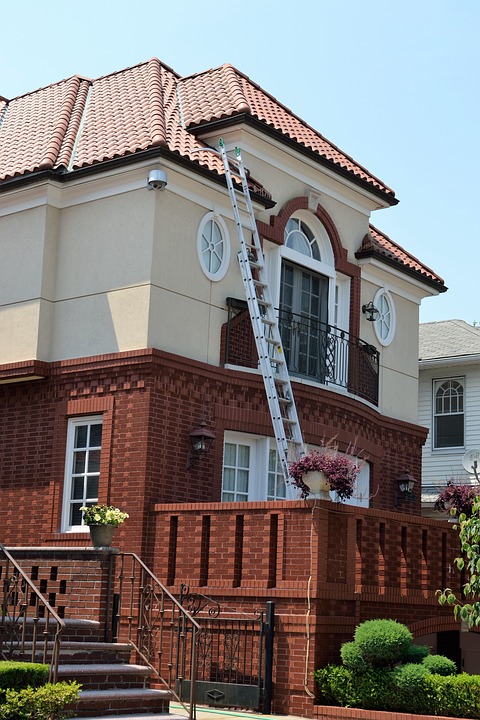DIY the Right Way: Tips for Spring Home Maintenance
Contributed by: Bret Engle

exterior home – roofing, woodwork, brick pointing after harsh winter months
Now that spring has finally sprung, it’s time to head outside and check your home for any damage it may have incurred during the winter. A lot can happen to a home during the cold, snowy winter months. Ice build-up can cause damage to your roof. Leaks can damage internal walls. And an accumulation of tree-borne debris often wreaks havoc on gutters and downspouts. Unless you find significant structural damage, you can probably do a lot of spring maintenance work yourself. Taking a good look around means you’ll have to get up on an extension or step ladder, which is a dangerous proposition if the ground around your home is moist and slippery. Observe ladder safety and always use power tools with care. Always avoid carrying power tools by the cord, and keep them away from sharp objects and sources of heat.
Up on the roof
Your roof should be checked every spring. If you noticed a lot of icicles hanging from the roof over the winter, it could be indicative of an ice dam, which is also indicated by wet and sagging insulation, or dark spots on your ceiling and walls. Look for any missing or damaged shingles or siding material, which will need to be replaced. Make sure you have a good quality hammer so that any new shingles are securely in place. Replacing a damaged shingle is usually something that can be done DIY as long as you’re comfortable climbing up on the roof. If not, consider calling a professional. Don’t forget to check around the chimney, and examine skylights for evidence of leaks.
Basement and foundation
During the spring, watch for pooling water around the edges of your home’s foundation, and look for signs of water damage in your basement. Standing water can do residual damage to your foundation and cause interior leakage. Be especially vigilant if there was a lot of snow along the edges of your house during the winter, which may have gotten down into the foundation as it melted. If you notice cracks or other evidence that’s something wrong, contact a professional as soon as possible. Don’t wait – it can be very expensive to delay.
Woodwork
If you have a wooden deck, chances are you’ll need to apply a new coat of stain after the wear and tear of 5 or 6 months of winter weather. It’s laborious work but necessary. Left untended, wood will gradually start to warp and rot, which means boards will have to be replaced. Paint looks nice but it can’t preserve wood as well as stain. If you have wood siding, you may have some work to do there as well. Excessive moisture may lead to a weakening and rotting along the eaves.
Tree health
Don’t neglect your trees, which are also vulnerable to cold weather damage. Look for dead or broken tree limbs, which can be tested by gently bending them. If it snaps, your tree is likely dead or in serious trouble. A healthy tree limb should give but not break. There should be no signs of fungi on the bark and around the base of the tree.
DIY
Use common sense when it comes to home maintenance. Sometimes, you can do more harm than good by jumping into a project if you lack the skill, knowledge and experience to do it right and safely. Remember, there’s no shame in asking for help or bringing in a professional. You’ll save money in the long run by making sure it’s right in the first place. Be honest and objective about your capabilities. If you have a problem with heights, don’t get on a ladder. It’s not worth the risk to your health or to your house.







